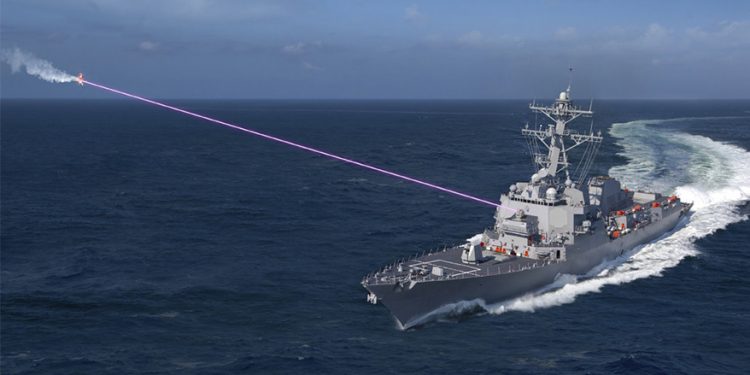We won’t be at Star Trek levels yet, but we’re certainlyin the early days of the laser weapons era.
The first to come into operation officially in 2021 is called Helios, and is a weapon system conceived and produced by The American
Lockheed Martin
. The house, already dad of stealth technology with the creation of the first fighter-bombers F-117 and F-35, equipped with low-emission radar technology, announced the agreement with the U.S. Navy.
There will be two Helios systems available for the Us Navy: The first system will be installed in the military base of White Sands, in New Mexico and will serve exclusively for the ground test phases; The second will be taken aboard a destroyer belonging to the Pacific Fleet. Will complement the Aegis System, the integrated weapon system produced by the Navy’s own unit by Lockheed.
The functions of the new and futuristic system will be triple:
- The high energy laser weapon, a high energy fiber laser that will have the primary purpose of burning, through an enormous concentration of thermal energy, targets ranging from small boats to unmanned aircraft or drones. Helios exploits the technological components deriving from internal research and development projects, including the
Athena system
and the Aladin laser, creating a complex weapon, which will however need all the technology possible even as It concerns the cooling systems and the safety of the crews in place. And it is not only about drones or light vehicles, since Helios, compared to previous prototypes, is also designed to counter larger and faster vehicles. - Intelligence, surveillance and Reconnaissance OR THE ISR system of intelligence, surveillance and reconnaissance will be of the hyper-reliable ones, able to use laser technology also for the acquisition of information for a long time Radius and support for Aegis systems.
- Finally, capacity of no small account, Helios will also have the crucial function of blinding of the ISR system and navigation of the drones in anti-UAS function (unmanned aircraft Systems, the remotely-guided aerial vehicles). One way, so to speak, kind to disable the espionage or reconnaissance actions of foreign forces countries without leading to direct aggression, avoiding international incidents.
Finally the sore notes for the U.S. Navy: the cost. The supply contract with Lockheed Martin amounted to 150 million dollars, with options of up to 942.8 million dollars for the supply of the two systems. Needless to imagine the proceeds of the company in case of a more massive production for the other units present in the different fleets deployed in the Atlantic and in the Mediterranean.
“The Helios program is the first of its kind and combines laser weapons, long-range ISR and anti-UAS capabilities, dramatically increasing situational awareness and layered defense options available for THE U.S. Navy- said Michael Evans, vice president and general manager of Integrated Warfare Systems and Sensors -This is a true capacity system, and we are honored that the Navy has entrusted Lockheed Martin with the opportunity to field these robust systems in the fleet. “

































